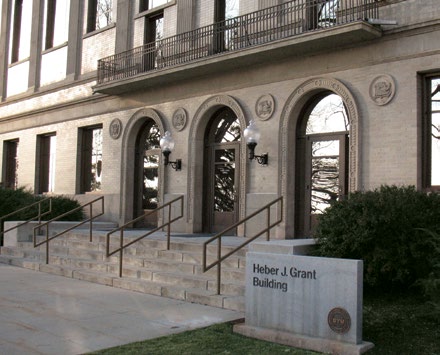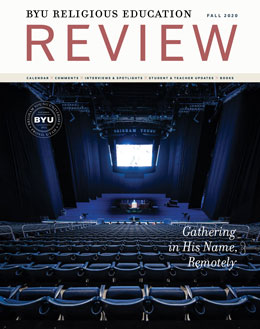“Someday” Has Come
Editor's Note
Scott Esplin, Publications Director
Our offices in the Religious Studies Center share BYU’s Heber J. Grant Building with the more well-known campus testing center. During the peak times of midterm and final exams, hundreds of students pack the hallways, snaking their way in a line that extends out the door and down the sidewalk, cramming one last time and likely offering silent prayers before facing their academic fates. As a staff, we occasionally grumble under our breath at students who sit on the floor against our doors, not knowing they open periodically, or at the crowds these busy times bring to the building’s limited restroom facilities.
After joining campus in the retreat to remote instruction in March owing to Covid-19, then slowly returning to our offices throughout the summer to move forward our publishing work, we miss those stressed-out students with whom we used to share close quarters.
Religious education is relational. When the Lord organized the School of the Prophets in Kirtland, Ohio, in the winter of 1833, he gave direction regarding student and teacher interactions. They all were to listen, participate, and love one another, facilitating equal privilege and edification (see Doctrine and Covenants 88:122–23). The instructions even outlined their manner of greeting—saluting each other in the name of Jesus Christ in a covenant of immutable fellowship and brotherhood “through the grace of God in the bonds of love,” walking “in all the commandments of God blameless, in thanksgiving, forever and ever” (v. 133).
 BYU’s Heber J. Grant building, home of the Religious Studies Center.
BYU’s Heber J. Grant building, home of the Religious Studies Center.
Photograph by Brent R. Nordgren.
President Dallin H. Oaks emphasized that relational teaching like this, especially gospel teaching, is more than simply dispensing knowledge. “A gospel teacher will never be satisfied with just delivering a message or preaching a sermon,” he taught. “A superior gospel teacher wants to assist in the Lord’s work to bring eternal life to His children.”[1] That human interaction transforms all involved.
I pray for the return of students. I am eager to help them figure out on the first day of class that the JSB (Joseph Smith Building) and JFSB (Joseph F. Smith Building) are not the same. I cannot wait to trip over them as they study in our hallways. I do not mind walking to another building to use the restroom because the lines are too long in our own. While students may not, I even long to feel the collective stress level of the Grant Building rise several notches as young adults worry once again about their recall abilities. I look forward to all of these things because I know that education for eternity matters eternally.
On long days as parents of young children, my wife and I occasionally joked, “People say we will someday miss this . . . but today is not that day.” When it comes to students on campus, for me, the “someday” of missing them has come.
Gratefully,
Scott C. Esplin
Publications Director
Religious Studies Center
Notes
[1] Dallin H. Oaks, “Gospel Teaching,” Ensign, November 1999, 80.
